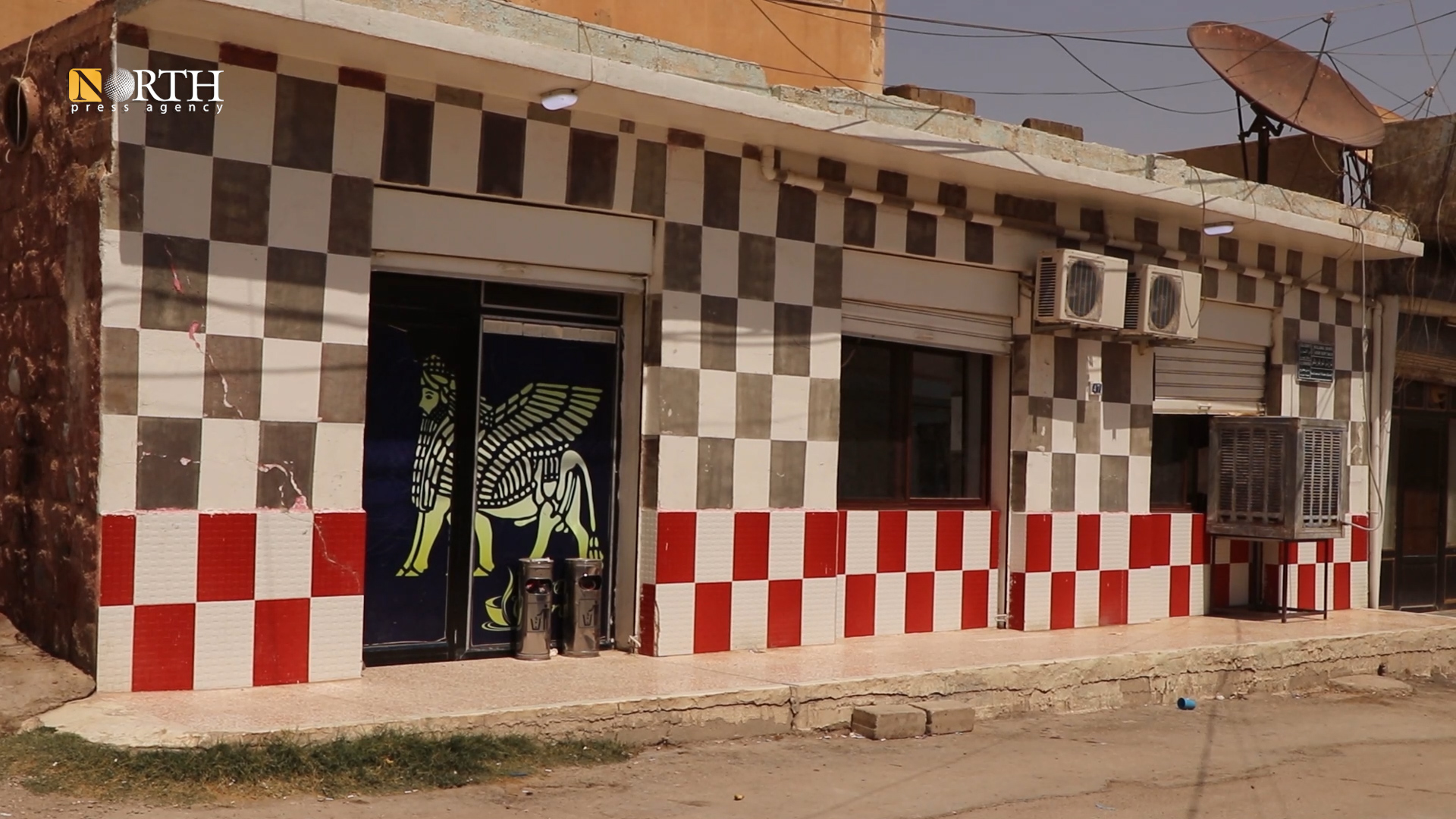TEL TAMR, Syria (North Press) – Mariam Solaqa, an Assyrian resident of Tel Tamr in the countryside of Hasakah, northeast Syria, could not hide her fears regarding the intensification of the Turkish shelling which may drive them to flee from their houses for the second time in six years.
Despite the decision of Solaqa’s family and other Assyrian families to stay in their houses, continue to plant their lands and perform their religious and heritage rites in their towns, she has not forgotten the suffering of their displacement six years ago.
In February 2015, the family was displaced from its village, Tel Kharita, located on the banks of the Khabur River, during the attacks of ISIS on the area when it abducted about 230 Assyrians and destroyed landmarks of their villages and places of their worship.
The countryside of Tel Tamr includes about 33 Assyrian villages, five of which were almost fully emptied due to ISIS attacks and their location on the frontlines with the Turkish forces, according to the residents.
Few families
Solaqa, who lives in a rented house in the Assyrian neighborhood of the town after its owners immigrated abroad, said, “we fear that the old scenario [ISIS attacks] will be repeated… due to this situation, half of the Assyrians have left for other countries.”
“We are going through a difficult time due to the bombardment. The water and electricity were cut off and we started to fill water on our own.”
Since the beginning of the escalation of the Turkish shelling three weeks ago, Tel Kharita, which links Jazira region with central Syria, has been suffering from a water shortage from Alouk station in the countryside of Sere Kaniye, in addition to power cuts due to the damage to the networks affected by the shelling.
The remaining families are worried about their fates with the continuation of targeting by the Turkish forces, despite the existence of two ceasefire agreements that Ankara announced with Washington and Moscow late in 2019 after targeting Sere Kaniye and Tel Abyad.
ISIS and Ottomans
Shadia Solaqa, Mariam’s mother, said that the sound of the bombardment frightens the children and the elderly in the town and its countryside.
Although the bombardment concentrates on the countryside most of the days, its sound is heard in Solaqa’s house and other houses in the town.
The Turkish bombardment reminds the senior Solaqa of the ISIS attack on their villages, and how they were displaced within hours to Derik, then to Homs, and finally to Lebanon.
She said that her husband, who was suffering from a heart disease and recently died of a heart attack, was affected by the shelling on the town’s countryside and worried about his family’s fate.
The senior Solaqa is facing difficulties raising her three children and her elderly mother-in-law.
Head of the Assyrian People’s Council in the town, Ilyas Anter, believes that the ambitions and ideas of the Ottoman Empire, which carried out the Seyfo genocide which resulted in the displacement of Assyrians to the Khabur region, are still continuing today.
“The recent attacks have no justification other than the old renewed Turkish ambitions, which consider the region to be the property of the Ottoman state,” Anter told North Press.
He described the stable atmosphere before the attacks saying “we were planting our lands and planning for our future.”
He fears the repetition of the events of the past, and that Turkey and the extremist factions will target Christians again.
“Turkey’s greed is still haunting it to occupy us, Mosul, and Aleppo which included regions in north Syrian and Iraq.”

